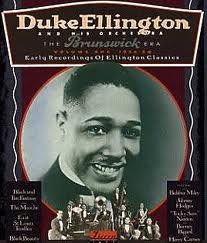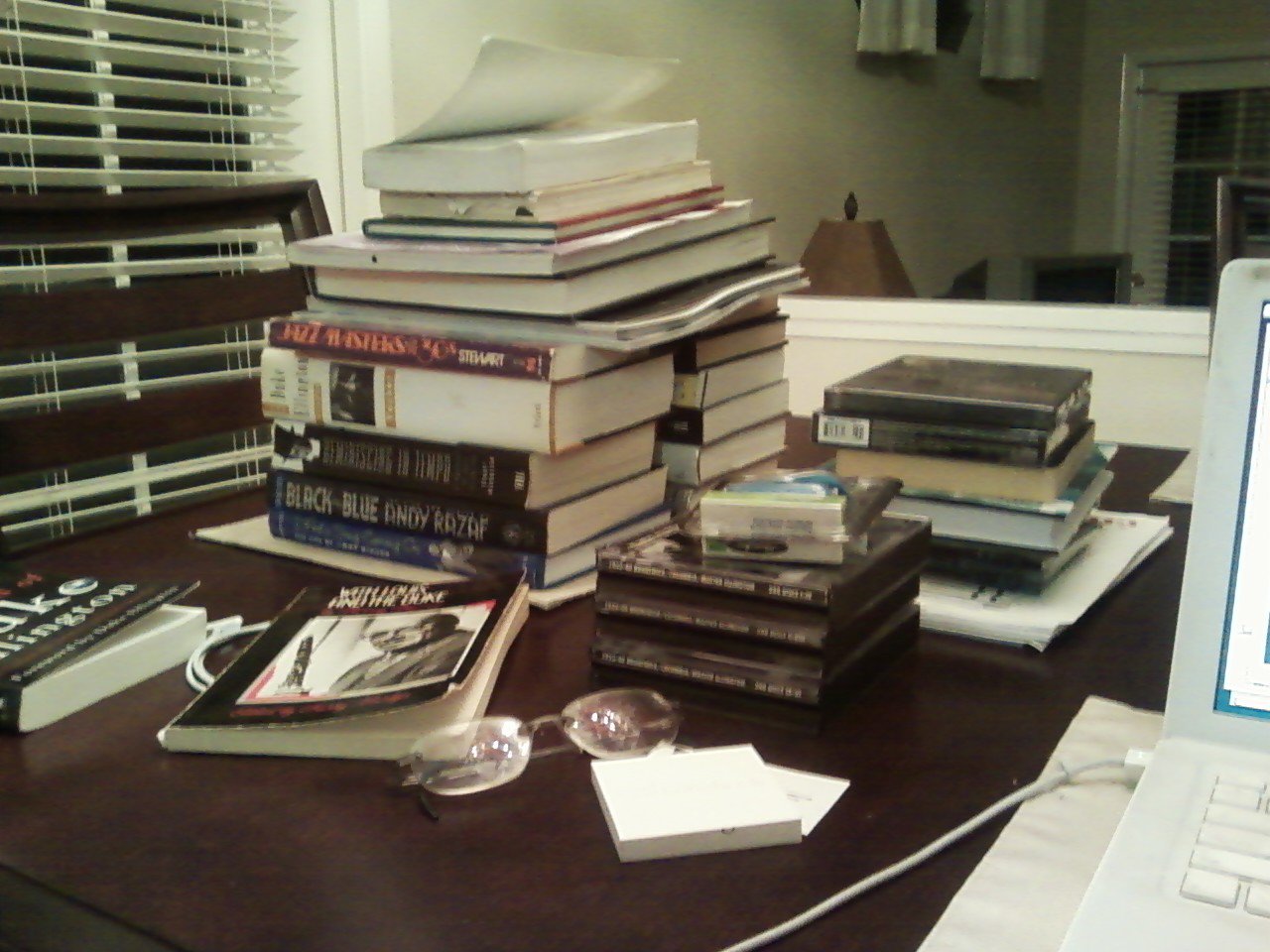George Shearing, who in his day was both an immensely popular and an impeccably tasteful jazz pianist, died this morning at the age of ninety-one. I wrote at length about him for the New York Times in 2002. That piece was quoted in this morning’s Associated Press obituary. Here’s the relevant part:
Bad habits die hard, but now that ”crossover” is no longer a dirty word, the time has come for George Shearing to be acknowledged not as a commercial purveyor of bop-and-water, but as an exceptionally versatile artist who has given pleasure to countless listeners for whom such critical hair-splitting is irrelevant. At 82, he is still active, still witty and still playing piano with the same luminous touch that put him on the map back when 52nd Street was lined with grubby little nightclubs instead of jumbo office towers. May he never stop swinging.
He never did.
* * *
.
The George Shearing Quintet plays Denzil Best’s “Move”:

 Early on Saturday evening I finished editing the 16,000-word, seventy-one-page first draft of the fourth chapter of my Duke Ellington biography. (To give you some perspective on this piece of work, my Wall Street Journal drama columns are about 850 words long.) This section of the book takes Ellington from the fall of 1926, when he made his first electrical recordings and signed a management contract with Irving Mills, to the summer of 1929, when he made his Broadway debut.
Early on Saturday evening I finished editing the 16,000-word, seventy-one-page first draft of the fourth chapter of my Duke Ellington biography. (To give you some perspective on this piece of work, my Wall Street Journal drama columns are about 850 words long.) This section of the book takes Ellington from the fall of 1926, when he made his first electrical recordings and signed a management contract with Irving Mills, to the summer of 1929, when he made his Broadway debut. To pack so much material into the span of a single chapter is an alarmingly difficult conceptual feat. To do it without having the results seem dry and fact-crammed is more difficult still. In order to avoid the latter fate, I devoted a couple of pages to a description of what America was like in 1927, and I confess to liking the results:
To pack so much material into the span of a single chapter is an alarmingly difficult conceptual feat. To do it without having the results seem dry and fact-crammed is more difficult still. In order to avoid the latter fate, I devoted a couple of pages to a description of what America was like in 1927, and I confess to liking the results: The entertainment listings in the “Goings On About Town” section of the December 3 issue of The New Yorker read like a magic carpet ride. On Broadway Katharine Cornell was starring in Somerset Maugham’s The Letter, Alfred Lunt and Lynn Fontanne in George Bernard Shaw’s The Doctor’s Dilemma, and Fred and Adele Astaire in George and Ira Gershwin’s Funny Face. If you felt like taking in a movie, you could check out The Jazz Singer, which had opened in October and was still going strong, though the magazine’s anonymous critic gave it a mixed notice: “Al Jolson superb in the Vitaphone which accompanies this dull movie.” Alfred Stieglitz was showing works by John Marin, America’s first cubist painter, at Room 303, the photographer’s modernism-friendly art gallery. Among the books reviewed in the magazine that week was Thornton Wilder’s The Bridge of San Luis Rey, and the list of recommended new titles for Christmas shoppers included Willa Cather’s Death Comes for the Archbishop, Ernest Hemingway’s Men Without Women, and P.G. Wodehouse’s Carry On, Jeeves.
The entertainment listings in the “Goings On About Town” section of the December 3 issue of The New Yorker read like a magic carpet ride. On Broadway Katharine Cornell was starring in Somerset Maugham’s The Letter, Alfred Lunt and Lynn Fontanne in George Bernard Shaw’s The Doctor’s Dilemma, and Fred and Adele Astaire in George and Ira Gershwin’s Funny Face. If you felt like taking in a movie, you could check out The Jazz Singer, which had opened in October and was still going strong, though the magazine’s anonymous critic gave it a mixed notice: “Al Jolson superb in the Vitaphone which accompanies this dull movie.” Alfred Stieglitz was showing works by John Marin, America’s first cubist painter, at Room 303, the photographer’s modernism-friendly art gallery. Among the books reviewed in the magazine that week was Thornton Wilder’s The Bridge of San Luis Rey, and the list of recommended new titles for Christmas shoppers included Willa Cather’s Death Comes for the Archbishop, Ernest Hemingway’s Men Without Women, and P.G. Wodehouse’s Carry On, Jeeves.